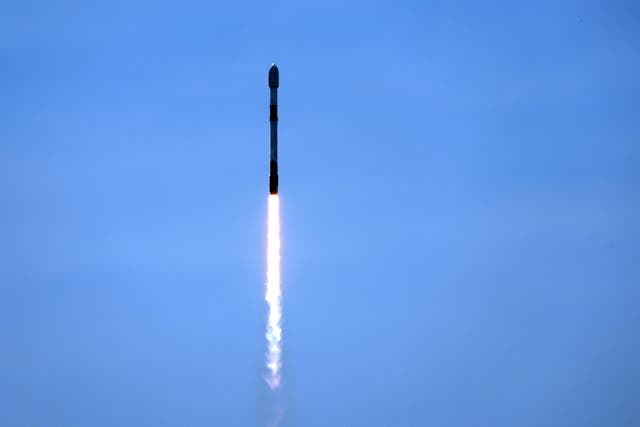Space telescope Euclid captures glittering galaxies and stars in first images
It was launched on a SpaceX Falcon 9 rocket from Cape Canaveral in Florida on July 1.

European space telescope Euclid has captured glittering galaxies and stars in its first images after a million-mile journey from Earth.
It was launched on a SpaceX Falcon 9 rocket from Cape Canaveral in Florida on July 1 and has arrived at its destination – a vantage point known as the Second Lagrange Point – on a mission to shed light on two of the universe’s greatest mysteries: dark energy and dark matter.
The European Space Agency (ESA) called it a “milestone” which indicates the telescope will achieve its goals.

It said “spiral and elliptical galaxies, nearby and distant stars, star clusters, and much more” could be seen in the images released on Monday, even though the instruments involved captured a portion of sky smaller than the full moon.
Black and white images were taken by Euclid’s visible light instrument (VIS), which will go on to capture “sharp” shots of billions of galaxies to measure their shapes, according to the space agency.
Red images were captured by the Near-Infrared Spectrometer and Photometer (NISP) instrument which will measure the amount of light that galaxies emit at each wavelength.
Project manager Giuseppe Racca said: “After more than 11 years of designing and developing Euclid, it’s exhilarating and enormously emotional to see these first images.
“It’s even more incredible when we think that we see just a few galaxies here, produced with minimum system tuning.
“The fully calibrated Euclid will ultimately observe billions of galaxies to create the biggest ever 3D map of the sky.”
The development of the VIS was led by Mark Cropper from University College London.
He said: “I’m thrilled by the beauty of these images and the abundance of information contained within them.”

The ESA stressed the snapshots are “early test images” taken to check the instruments and review how the spacecraft can be refined, and a new set of “more detailed” images will be released at a later date.
Euclid’s six-year mission aims to scrutinise the dark universe to better understand why it is rapidly expanding.
Captured images will help astronomers gain insights into the elusive dark matter, particles that do not absorb, reflect or emit light.
Dark matter cannot be seen directly, but scientists know it exists because of the effect it has on objects that can be observed directly.

They believe it “binds together galaxies creating the environment for stars, planets and life”.
The mission will also explore dark energy, which is thought to push galaxies apart, causing the expansion of the universe to accelerate.
The UK has contributed £37 million towards the £850 million mission, with scientists playing key roles in designing and building the probe and leading on one of the two scientific instruments on board.





